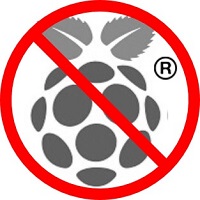Grove-TF Mini LiDAR
Introduction
This product is based on ToF (Time of Flight) principle and integrated with unique optical and electrical designs, so as to achieve stable, precise, high sensitivity and high-speed distance detection.
ToF is the abbreviation of Time of Flight technology, and its operating principle is as follows: a modulated near-infrared light is sent from the sensor and reflected by an object; the distance to the object to be shot can be converted with the sensor by calculating the time difference or phase difference between the light sending and the light reflection, so as to produce the depth information.
Warning
Prevent dust or any other foreign matter from entering the lens; otherwise it may affect the light transmission.
Version
| Product Version | Changes | Released Date |
|---|---|---|
| Grove-TF Mini LiDAR V1.0 | Initial | Nov 2017 |
Specification
| Product Name | TFmini |
|---|---|
| Operating range | 0.3m-12m |
| Maximum operating range at 10% reflectivity | 5m |
| Average power consumption | 0.6W |
| Applicable voltage range | 4.5V-6V |
| Acceptance angle | 2.3° |
| Minimum resolution ratio | 1cm |
| Frequency | 100Hz |
| Accuracy | 1% (less than 6m), 2% (6m-12m) |
| Distance detection unit | cm |
| Wavelength | 850nm |
| Size | 42mm×15mm×16mm |
| Operating temperature | -20℃-60℃ |
| Light sensitivity | 70,000lux |
| Weight | 4.7g |
| Communication interface | UART 115200 |
| LED peak current | 800ma |
| Serial port TTL voltage level | 3.3V |
| Electromagnetic Compatibility(EMC) | EN 55032 Class B |
Tip
More details about Grove modules please refer to Grove System
Platforms Supported
Getting Started
Play With Arduino
Hardware
- Step 1. Prepare the below stuffs:
| Seeeduino Lite | Grove-TF-Mini-LiDAR |
|---|---|
 |
 |
| Get ONE Now | Get ONE Now |
- Step 2. Connect Grove-TF-Mini-LiDAR to UART port of Seeeduino Lite.
- Step 3. Connect Seeeduino to PC through a USB cable.
Note
The Grove-TF Mini LiDAR’s UART baud rate is 115200 and the SoftwareI2C can’t support it. So if we use 1 hardware UART to hook up the sensor and other hardware UART for Serial Port display, we need at least 2 hardware UART platforms, such as arduino mega, seeeduino lite and so on. If we only have 1 UART platform(ie. seeeduino v4.2, arduino uno), we can use the I2C LCD as display.
Software
- Step 1. The Grove-TF Mini LiDAR is a hexadecimal output data. Each frame data is encoded with 9 bytes, including 1 distance data (Dist). Each distance data has corresponding signal strength information (Strength). The frame end is the data parity bit.
| Byte | Data encoding interpretation |
|---|---|
| Byte1 | 0x59, frame header, all frames are the same |
| Byte2 | 0x59, frame header, all frames are the same |
| Byte3 | Dist_L distance value is a low 8-bit. |
| Byte4 | Dist_H distance value is a high 8-bit. |
| Byte5 | Strength_L is a low 8-bit. |
| Byte6 | Strength_H is a high 8-bit. |
| Byte7 | Integration time. |
| Byte8 | Reserved bytes. |
| Byte9 | Checksum parity. |
- Step 2. Copy the code into Arduino IDE and upload.
unsigned char dta[100];
unsigned char len = 0;
void setup()
{
Serial1.begin(115200);
Serial.begin(115200);
}
void loop()
{
while(Serial1.available()>=9)
{
if((0x59 == Serial1.read()) && (0x59 == Serial1.read())) //Byte1 & Byte2
{
unsigned int t1 = Serial1.read(); //Byte3
unsigned int t2 = Serial1.read(); //Byte4
t2 <<= 8;
t2 += t1;
Serial.print(t2);
Serial.print('\t');
t1 = Serial1.read(); //Byte5
t2 = Serial1.read(); //Byte6
t2 <<= 8;
t2 += t1;
Serial.println(t2);
for(int i=0; i<3; i++)
{
Serial1.read(); ////Byte7,8,9
}
}
}
}
- Step 3. We will see the distance display on terminal. The blue curve is the distance and the red is Strength.

- Step 4. We also can connect the sensor to PC USB port directly through Serial to USB convertor. We can use the Grove-TF-Mini-LiDAR Master Computer Software to monitor the distance and strength.
Resources
- [Datasheet] Grove-TF-Mini-LiDAR
- [Software] Grove-TF-Mini-LiDAR Master Computer Software
| Arduino | Wio | BeagleBone | Raspberry Pi | LinkIt ONE |
|---|---|---|---|---|
 |
 |
 |
 |
 |
Caution
The platforms mentioned above as supported is/are an indication of the module's hardware or theoritical compatibility. We only provide software library or code examples for Arduino platform in most cases. It is not possible to provide software library / demo code for all possible MCU platforms. Hence, users have to write their own software library.
Help us make it better
Welcome to the new documentation system of Seeed Studio. We have made a lot of progress comparing to the old wiki system and will continue to improve it to make it more user friendly and helpful. The improvement can't be done without your kindly feedback. If you have any suggestions or findings, you are most welcome to submit the amended version as our contributor via Github or give us suggestions in the survey below, it would be more appreciated if you could leave your email so that we can reply to you. Happy Hacking!



